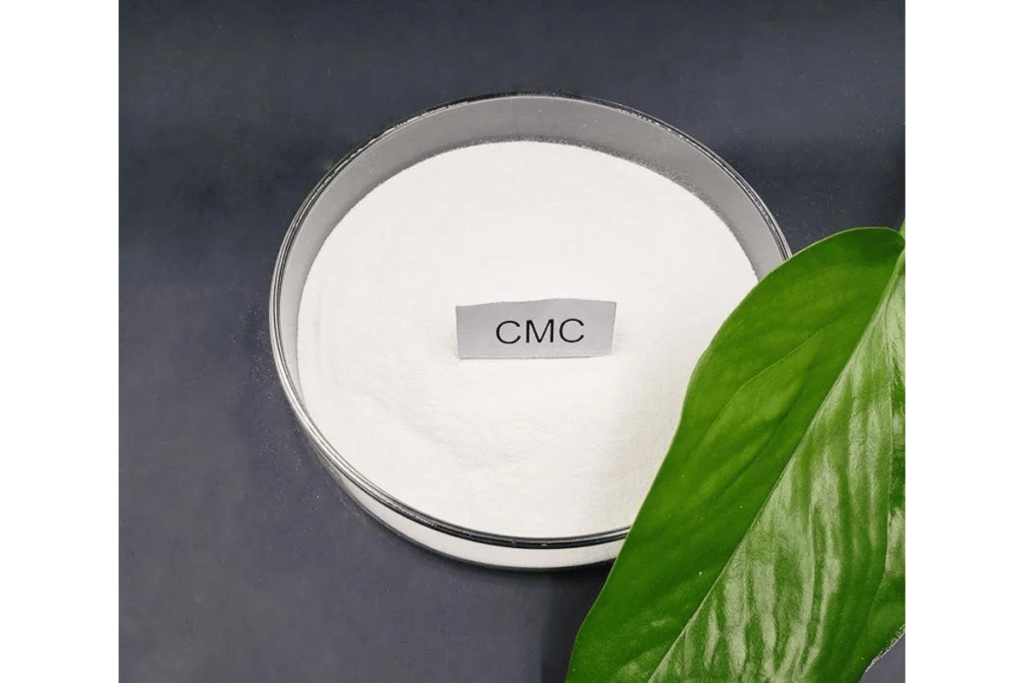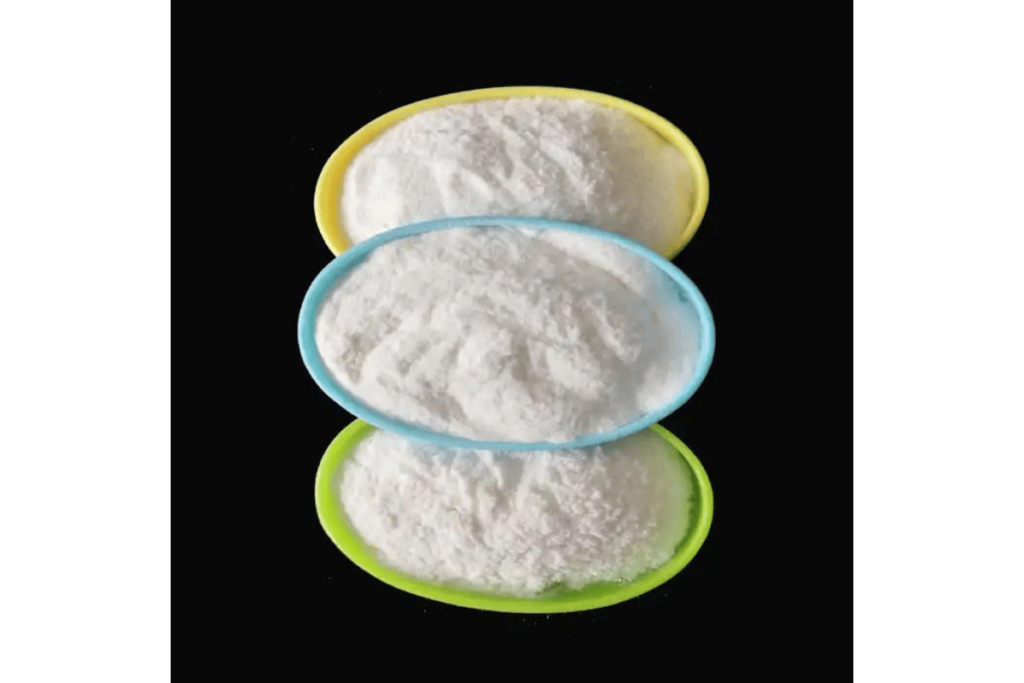Carboxymethyl cellulose (CMC), also known as carboxymethylcellulose sodium or CMC Na, is a versatile substance widely used in the food industry as a CMC thickening agent and stabilizer. It is a derivative of cellulose, which is modified by introducing carboxymethyl groups (-CH2-COOH) into the cellulose chain. This chemical alteration enhances its solubility in water, making it an ideal ingredient for various food applications.
The journey of CMC in food industries began in the early 20th century. Initially explored for its thickening properties, CMC soon gained popularity due to its unique ability to modify the texture of food products. Over the years, the use of cmc powder and cmc stabilizer for ice cream, among other applications, has become commonplace in food processing. This widespread adoption is attributed to the efficiency and versatility of CMC in enhancing food texture and stability.
CMC powder uses extend beyond mere thickening; it also acts as an emulsifier and moisture-retainer, which is crucial in bakery items and dairy products. The evolution of CMC’s application reflects the industry’s ongoing efforts to improve food quality and consumer experience

Properties of Carboxymethyl Cellulose as a Thickening Agent
Physical and Chemical Properties that Make Carboxymethyl Cellulose an Effective Thickener
The effectiveness of Carboxymethyl cellulose (CMC) as a thickening agent in food industries lies in its unique physical and chemical properties. CMC is a high-molecular-weight carbohydrate polymer that is highly soluble in water. Upon dissolution, it swells, increasing the viscosity of the solution. This characteristic is pivotal in transforming the texture of food products, providing a desirable thickness without altering the taste.
Another critical property of CMC is its thermal stability. Unlike some natural gums that can degrade at high temperatures, CMC maintains its viscosity and stability during cooking and processing. This heat resistance makes it an ideal ingredient in products that require pasteurization or sterilization.
Moreover, the ionic nature of carboxymethylcellulose sodium contributes to its efficacy as a thickener. The negative charge of the carboxymethyl groups interacts with water molecules, creating a stable, gel-like structure. This interaction is crucial in maintaining consistency and preventing separation in products like sauces and dressings.
Comparison with Other Thickening Agents
When compared to other thickening agents, CMC stands out for several reasons. Unlike starch-based thickeners, which can impart a cloudy appearance, CMC maintains the clarity of the product, making it especially valuable in clear sauces and beverages. Additionally, CMC does not require heat to activate its thickening properties, unlike some natural thickeners like gelatin, which need to be heated and then cooled.
Furthermore, CMC’s effectiveness in small quantities sets it apart from other agents. While some thickeners might require larger amounts to achieve the desired viscosity, CMC is efficient even in low concentrations, making it cost-effective.
Another significant advantage of CMC over other thickeners is its resistance to enzymatic breakdown. This stability ensures that the thickening properties remain intact throughout the shelf life of the product, which is not always the case with natural thickeners that can be susceptible to enzymatic degradation.
Applications of Carboxymethyl Cellulose in Various Food Products
Use of Carboxymethyl Cellulose in Bakery Items, Dairy Products, and Sauces
Carboxymethyl cellulose (CMC) has found its way into a myriad of food products, owing to its multifunctional properties as a thickening agent and stabilizer. In bakery items, CMC is often used to improve dough consistency, enhance texture, and prolong shelf life. It helps in retaining moisture, thereby keeping baked goods like bread and cakes soft and fresh for a longer duration.
In the dairy industry, CMC plays a crucial role, especially in products like ice cream and yogurt. As a cmc stabilizer for ice cream, it prevents the formation of ice crystals, ensuring a smooth and creamy texture. Similarly, in yogurts and cheese spreads, CMC helps in maintaining uniformity and preventing separation of ingredients, thus enhancing the overall mouthfeel and stability of these products.
The application of CMC in sauces and dressings is another area where its impact is significantly felt. It stabilizes emulsions and suspensions, ensuring that the ingredients do not separate over time. This property is crucial for maintaining the desired consistency and appearance of sauces, particularly in ready-to-use products that require long shelf lives.
Specific Roles of Carboxymethyl Cellulose in Texture and Stability Enhancement
The role of CMC in texture enhancement cannot be overstated. By increasing the viscosity of liquids, it imparts a rich and full-bodied texture to soups, gravies, and sauces. This modification in texture is not just for aesthetic purposes; it also plays a critical role in how the flavor is perceived by enhancing mouthfeel.
Furthermore, the stability provided by CMC is essential in complex food formulations. In beverages, for example, CMC helps in suspending particles uniformly, preventing sedimentation. In frozen products, CMC’s role in reducing ice crystal growth during freeze-thaw cycles is invaluable, maintaining product integrity and quality.

Benefits of Using Carboxymethyl Cellulose in Food Industries
Advantages like Cost-Effectiveness, Versatility, and Health Benefits
The use of Carboxymethyl cellulose (CMC) in food industries brings several significant benefits, starting with cost-effectiveness. Due to its high efficiency as a thickener, only small amounts of CMC are needed to achieve the desired consistency in food products. This low usage level translates to cost savings for manufacturers, especially when compared to other thickening agents that might require larger quantities.
The versatility of CMC is another major advantage. As a multi-functional ingredient, it serves not only as a thickening agent but also as a stabilizer, emulsifier, and moisture retainer. This wide range of functions makes CMC a valuable ingredient across various food categories, from bakery products and dairy to sauces and beverages. Its ability to perform in different pH levels and under various processing conditions (like high heat) further enhances its utility in diverse food applications.
In terms of health benefits, CMC is non-toxic and generally regarded as safe by food regulatory authorities. It is also gluten-free, making it suitable for use in gluten-free products, catering to the needs of consumers with gluten sensitivities or celiac disease. Additionally, as CMC is derived from cellulose, a natural fiber, it contributes to the dietary fiber content of the food products, which is beneficial for digestive health.
Regulatory Status and Safety Considerations
Regarding regulatory status, CMC has been extensively evaluated and approved for use in food products by major international food safety authorities, including the FDA (U.S. Food and Drug Administration) and EFSA (European Food Safety Authority). These approvals are based on thorough assessments of its safety and efficacy as a food additive.
Safety considerations are paramount when it comes to food additives, and CMC stands out for its safe profile. It is non-allergenic and does not have any known adverse effects when consumed in typical amounts found in food products. This safety aspect, combined with its effectiveness and versatility, makes CMC a preferred choice for food manufacturers seeking to enhance the quality and appeal of their products.

Innovative Uses and Future Trends
Emerging Applications of Carboxymethyl Cellulose in Novel Food Products
The innovative uses of Carboxymethyl cellulose (CMC) are continuously expanding in the food industry, driven by both technological advancements and changing consumer preferences. One of the emerging applications of CMC is in the development of plant-based and vegan products. As consumers increasingly seek vegetarian and vegan options, CMC serves as an ideal ingredient in these products due to its ability to mimic the texture and consistency traditionally provided by animal-based ingredients.
Another innovative use of CMC is in the field of functional foods, where it contributes to the creation of health-oriented products. CMC’s ability to interact with other ingredients allows for the development of food items with enhanced nutritional profiles, such as fortified beverages and energy bars.
Future Research Directions and Potential Developments
Looking towards the future, research in the area of cmc powder uses is focusing on enhancing its functionality and sustainability. One potential development is the creation of CMC variants with even lower usage levels, further reducing the cost and environmental impact of food production.
Additionally, there is ongoing research into the use of CMC in encapsulation technologies. This involves using CMC to encapsulate flavors, vitamins, or other active ingredients, thereby improving their stability and controlled release in food products. Such advancements could revolutionize the way food is fortified and how flavor profiles are managed.
In the realm of sustainability, efforts are being made to produce CMC in more environmentally friendly ways, including the exploration of renewable sources and more efficient production processes. This focus on sustainability aligns with the broader industry trend towards eco-friendly food production practices.
Challenges and Limitations
Technical Challenges in the Application of Carboxymethyl Cellulose
Despite its many benefits, the use of Carboxymethyl cellulose (CMC) in food industries also presents certain technical challenges. One of the primary issues is the precise control of viscosity. Since CMC can significantly alter the texture of a product, achieving the exact desired consistency requires careful measurement and mixing. Overuse or improper dispersion of CMC can lead to undesirable textures, such as overly gummy or slimy consistencies.
Another challenge is related to the interaction of CMC with other ingredients. In complex food formulations, CMC might interact with ions or other additives, potentially affecting the overall stability and appearance of the product. This requires thorough testing and formulation adjustments to ensure product quality and consistency.
Environmental and Sustainability Concerns
Environmental and sustainability concerns regarding the production and use of CMC are also gaining attention. The process of manufacturing CMC involves chemical modifications of cellulose, which can have environmental impacts if not managed properly. There is a growing need for more sustainable production methods, including the use of less harmful chemicals and more efficient processes that minimize waste.
Additionally, the source of cellulose used for CMC production is another point of concern. As the demand for CMC increases, ensuring that the cellulose is sourced from sustainable forestry or recycled materials becomes crucial in mitigating the environmental impact.
In conclusion, Carboxymethyl cellulose (CMC), with its remarkable properties as a thickening agent and stabilizer, has played a pivotal role in revolutionizing the food industry. Its versatility is evident in its wide range of applications, from enhancing the texture and stability of bakery products and dairy items to improving the consistency of sauces and beverages. The cost-effectiveness and efficiency of CMC, particularly in small quantities, make it an invaluable asset for food manufacturers.
The health benefits and safety profile of carboxymethylcellulose sodium, coupled with its approval by regulatory authorities, further underscore its significance in the food sector. CMC’s ability to meet diverse consumer needs, including those of gluten-sensitive individuals, and its contribution to the dietary fiber content of food products, align with the current health-conscious trends in the industry.
Looking ahead, the evolving role of CMC in the food industry is promising. Its potential in novel food applications, like plant-based and functional foods, points to a future where CMC continues to adapt to and meet the changing demands of consumers and food technologies. However, addressing the technical challenges and environmental concerns associated with CMC will be crucial in maintaining its position as a preferred food additive.
In summary, the versatility, efficacy, and safety of CMC make it a cornerstone ingredient in the food industry. Its ongoing developments and applications not only reflect the dynamic nature of food science but also highlight the continuous pursuit of innovation and sustainability in food production.





